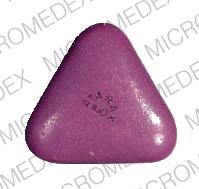Atarax Dosage
Generic name: hydroxyzine hydrochloride
Dosage form: Tablets and Syrup
Drug classes: Antihistamines, Miscellaneous anxiolytics, sedatives and hypnotics
Medically reviewed by Drugs.com. Last updated on Jun 10, 2025.
For symptomatic relief of anxiety and tension associated with psychoneurosis and as an adjunct in organic disease states in which anxiety is manifested: in adults, 50–100 mg q.i.d.; children under 6 years, 50 mg daily in divided doses and over 6 years, 50–100 mg daily in divided doses.
For use in the management of pruritus due to allergic conditions such as chronic urticaria and atopic and contact dermatoses, and in histamine-mediated pruritus: in adults, 25 mg t.i.d. or q.i.d.; children under 6 years, 50 mg daily in divided doses and over 6 years, 50–100 mg daily in divided doses.
As a sedative when used as a premedication and following general anesthesia: 50–100 mg in adults, and 0.6 mg/kg in children.
When treatment is initiated by the intramuscular route of administration, subsequent doses may be administered orally.
As with all medications, the dosage should be adjusted according to the patient's response to therapy.
Frequently asked questions
- Can you take hydroxyzine for anxiety and sleep?
- Why was Atarax discontinued?
- Can Hydroxyzine be Taken Long-term For Anxiety?
- Does Benadryl help with or cause anxiety?
- Can dogs take hydroxyzine?
- When Can You Safely Drink Alcohol After Stopping Hydroxyzine?
- Can you take antihistamines when pregnant?
More about Atarax (hydroxyzine)
- Check interactions
- Compare alternatives
- Reviews (146)
- Drug images
- Side effects
- During pregnancy
- Support group
- Drug class: antihistamines
- Breastfeeding
Patient resources
Other brands
Professional resources
Other brands
Related treatment guides
See also:
Further information
Always consult your healthcare provider to ensure the information displayed on this page applies to your personal circumstances.


